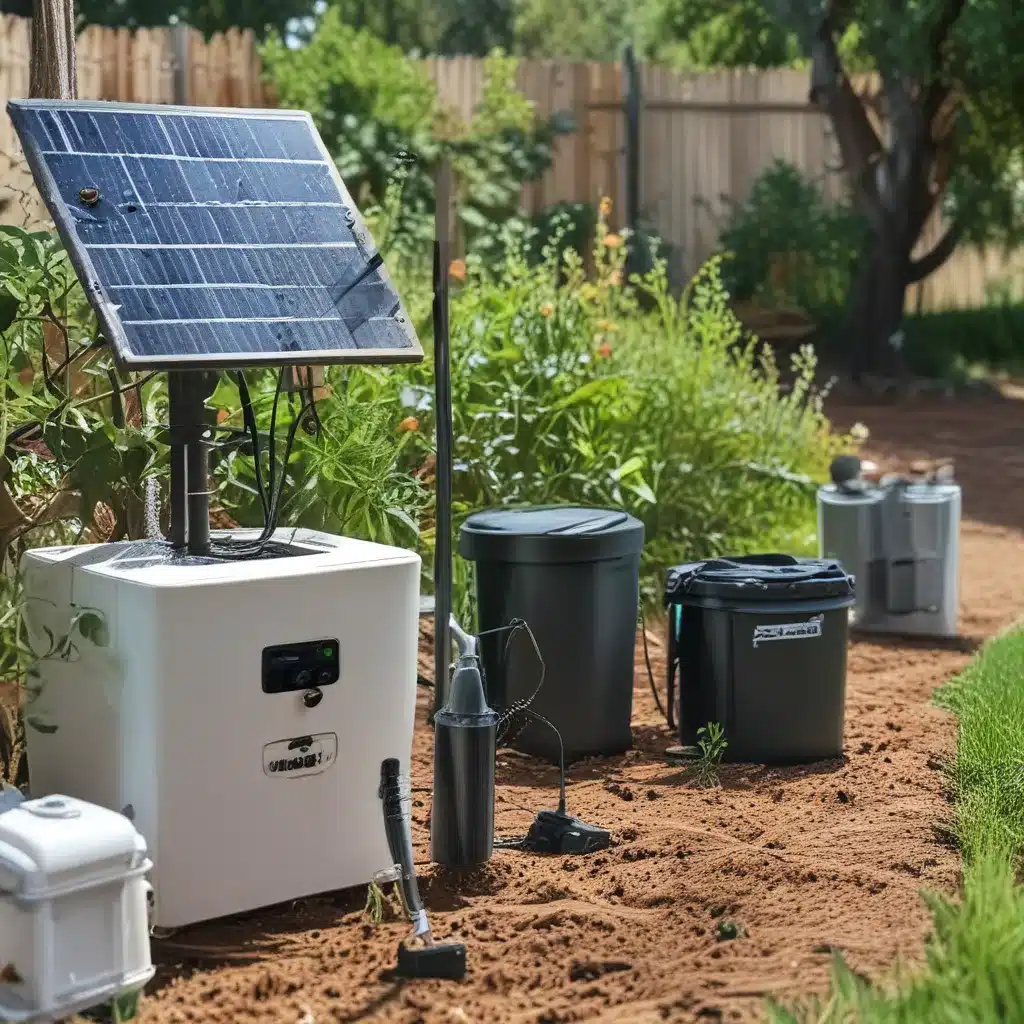
Transforming Your Backyard into a Self-Sustaining Oasis
As a passionate gardener, I know the struggles of maintaining a thriving outdoor space. The constant need to water, weed, and ensure the perfect balance of sun and shade can quickly become a time-consuming chore. But what if I told you there’s a way to automate your garden, giving you more time to enjoy its beauty?
Welcome to the world of DIY solar-powered irrigation systems! This ingenious solution not only reduces your workload but also helps the environment by harnessing the power of the sun. Imagine strolling through your lush, vibrant garden, while your plants soak up the necessary moisture without any manual intervention. It’s the stuff of gardening dreams!
Tapping into the Power of the Sun
The key to this self-sustaining system lies in the magic of solar energy. By leveraging the abundant sunshine, we can power a robust irrigation network that keeps your plants hydrated and happy, even when you’re away. No more lugging heavy watering cans or trying to time your sprinklers just right.
Solar As Systems Inc., a leading provider of solar energy solutions, has the perfect DIY kit to transform your outdoor space. With their user-friendly components and step-by-step guidance, you’ll be on your way to creating a verdant, low-maintenance oasis in no time.
Designing Your Automated Irrigation System
The first step in your solar-powered garden odyssey is to assess the size and layout of your outdoor space. This will help you determine the scale of your irrigation system and the necessary components. Remember, the beauty of this project is its flexibility – you can start small and gradually expand as your green thumb grows.
One of the key elements is a reliable water source. Whether you’re tapping into a rainwater collection system or an existing water pump, make sure you have a consistent and sustainable supply. This will ensure your plants receive the hydration they need, even during dry spells.
Next, it’s time to map out the irrigation network. Picture a series of strategically placed drip lines or micro-sprinklers that deliver water directly to the root zone of your plants. This targeted approach not only conserves water but also promotes healthier growth by reducing evaporation and weed growth.
Harnessing the Power of Automation
The true magic of this DIY solar-powered irrigation system lies in its automated capabilities. By incorporating smart sensors and timers, you can create a fully self-regulating system that adapts to the changing needs of your garden.
Imagine a scenario where your plants receive just the right amount of water, no matter the weather conditions. Soil moisture sensors can detect when the soil is dry and trigger the irrigation system to spring into action. Meanwhile, rain sensors can pause the watering cycles when Mother Nature lends a helping hand, ensuring your plants don’t become waterlogged.
But the automation doesn’t stop there. You can also program your system to water at the optimal times of day, ensuring maximum absorption and minimizing evaporation. Early morning or late evening sessions are often the most efficient, as the cooler temperatures and calmer winds reduce water loss.
Maximizing Efficiency and Saving Resources
One of the biggest benefits of a solar-powered irrigation system is its incredible efficiency. By harnessing the power of the sun, you’re reducing your reliance on traditional energy sources, which can be both costly and environmentally taxing.
As discussed on Reddit’s r/homeautomation forum, the ability to create a self-sufficient system that runs on renewable energy is a game-changer for gardeners. This not only saves you money on utility bills but also aligns with the growing trend of sustainable living.
Furthermore, the precision of a drip irrigation system minimizes water waste. By delivering the exact amount of moisture your plants need, directly to their roots, you can significantly reduce your overall water consumption. This is a win-win for both your wallet and the environment.
Overcoming Challenges and Embracing Adaptability
No DIY project is without its challenges, and a solar-powered irrigation system is no exception. But with the right mindset and a little bit of problem-solving, you can overcome any hurdles that come your way.
One potential issue that may arise is the availability of reliable internet or Wi-Fi connectivity. As mentioned on the r/homeautomation subreddit, some gardeners may find themselves in remote locations with limited internet access. In these cases, you can opt for a standalone system that operates independently, using timers and sensors to regulate the watering cycles.
Another challenge could be the initial setup and programming of your irrigation network. But fear not! Solar As Systems Inc. offers comprehensive guides and support to ensure your DIY journey is as smooth as possible. Whether you’re a seasoned tech-savvy gardener or a complete novice, their team is there to help you every step of the way.
The beauty of this project lies in its adaptability. As your garden grows and your needs change, you can easily expand or modify your irrigation system to suit your evolving landscape. It’s a living, breathing creation that can adapt and evolve alongside your green haven.
Cultivating a Sustainable Future
As we embark on this solar-powered irrigation adventure, it’s important to remember that we’re not just creating a beautiful garden – we’re also shaping a more sustainable future. By harnessing the power of the sun and reducing our reliance on traditional water-guzzling systems, we’re making a positive impact on the environment.
Imagine the sense of pride and accomplishment you’ll feel when you step out into your thriving, self-sustaining garden, knowing that you’ve played a part in conserving precious resources and reducing your carbon footprint. It’s a small but impactful step towards a greener, more eco-conscious world.
So, let’s roll up our sleeves and dive into this exciting DIY project. Together, we’ll transform your outdoor space into a lush, vibrant oasis, where the only thing you’ll need to worry about is which flowers to plant next. The future of gardening is here, and it’s powered by the sun.


